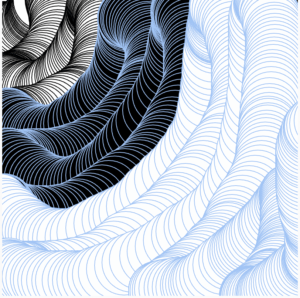Link to the Code:
https://editor.p5js.org/jiawen21/sketches/bdNlG2Yr7
Description
This is a windmill-looking flower. Looping around the windmill is an ellipse of circles circling around it. I don’t really have a reason for putting it around the windmill. I just stumbled upon it and it looks pretty cool so I just kept it.
Link to the generative motion:
Link to my generative motion: Screen Recording 2022-10-05 at 11.28.54 AM
Coding:

This is the part where I find the most challenging. The cos and the sin angle. I took references from Slack to create this code and I changed up the numbers a bit.
Reflection:
I feel like I didn’t really use much math. The only part that involves a bit of math is the coding for the windmill. Since I’m not good at cos and sin, it’s hard for me to understand the concept of it. I just plugged-in random numbers until I get one that I’m satisfied with. For example, I kept trying for the angle of the windmill. It’s fascinating how when I put “6” for angle, it only has one circle circling it, however when I put “7”, the connected circles reappear making it look like a windmill.
I explored a lot of motion throughout the process but I only used two motions in my projects. I explored bouncing where a ball bounces back and forth. I explored Oscillation but I feel like it doesn’t fit the windmill flower concept so I didn’t add it in. I explored the use of a sine graph. In my project, I used sine and cos angle motion to create the windmill flower. It seems to me that the speed determines what my windmill looks like. If the speed goes slower, it would not look as much like a windmill as it does right now. The more I look at it, the more it makes my eyes tired. Maybe the reason is due to the speed, but this is also the reason why I really like it. I feel like it’s really satisfying to look at the windmill spinning around and around.
I adjust the sin() values using the map() function by just plugging in the number and kept on trying until I get a perfect position that I want.
I think the circular angle movement helps us visualize the sin and cosine values better. The graph gives us a better visualization of where the number will stand when we code. It gives me the exact number if we ever want to code a certain angle.


 I feel like when I just started to use the “if” statement, it was the hardest part for me, maybe because since I’m not familiar with it, it’s hard to know what to put for the variables. After looking at the examples and asking the IMA fellows, I had a better idea of how “if” statement work.
I feel like when I just started to use the “if” statement, it was the hardest part for me, maybe because since I’m not familiar with it, it’s hard to know what to put for the variables. After looking at the examples and asking the IMA fellows, I had a better idea of how “if” statement work.












